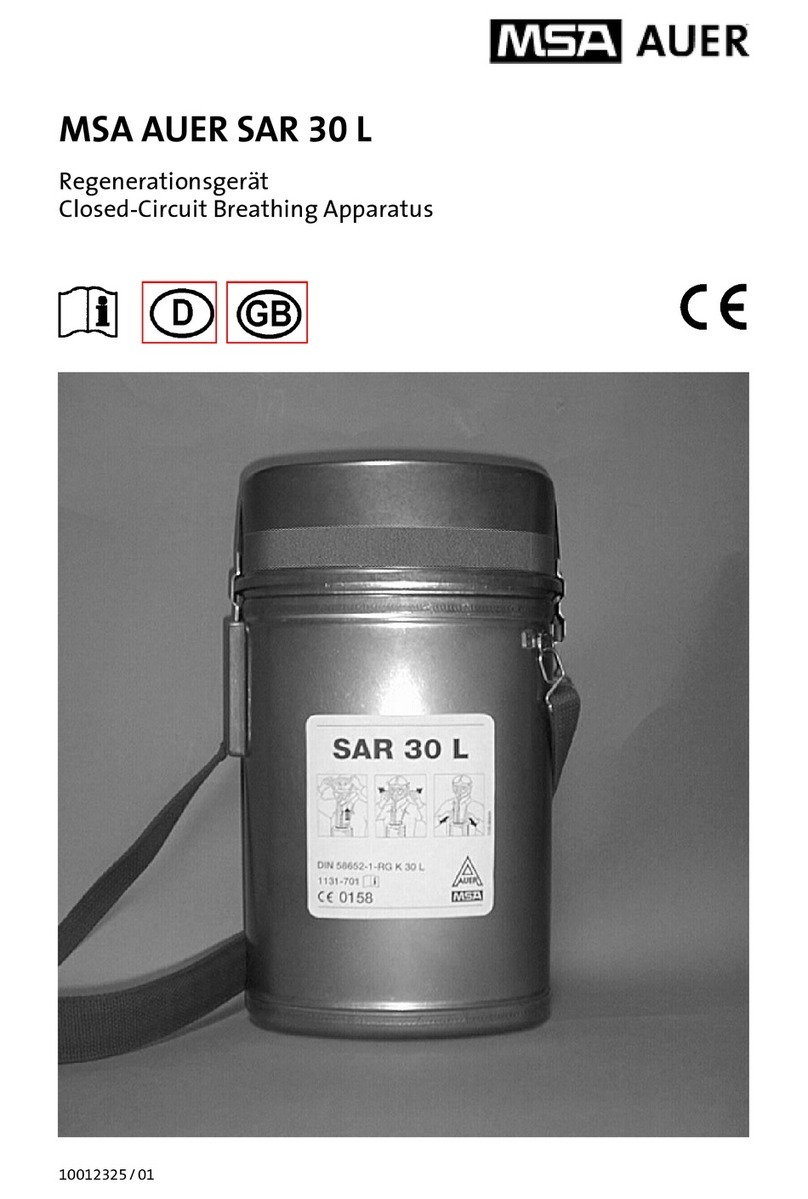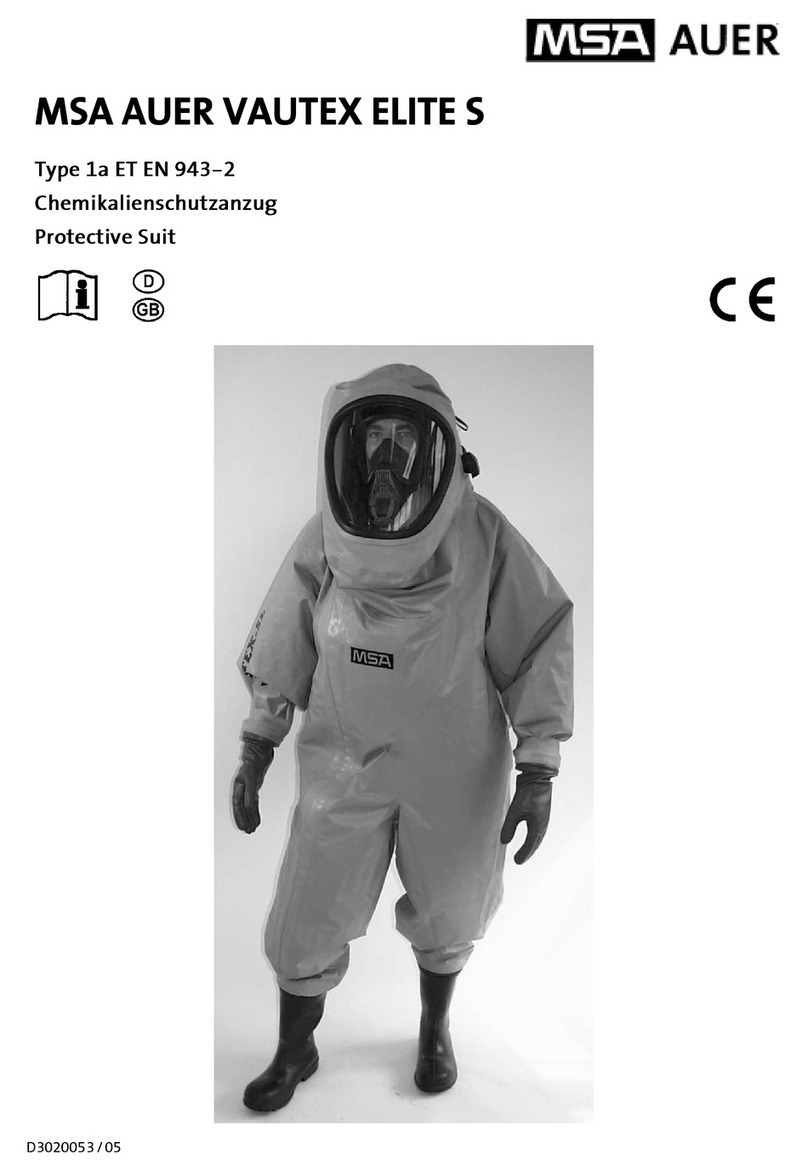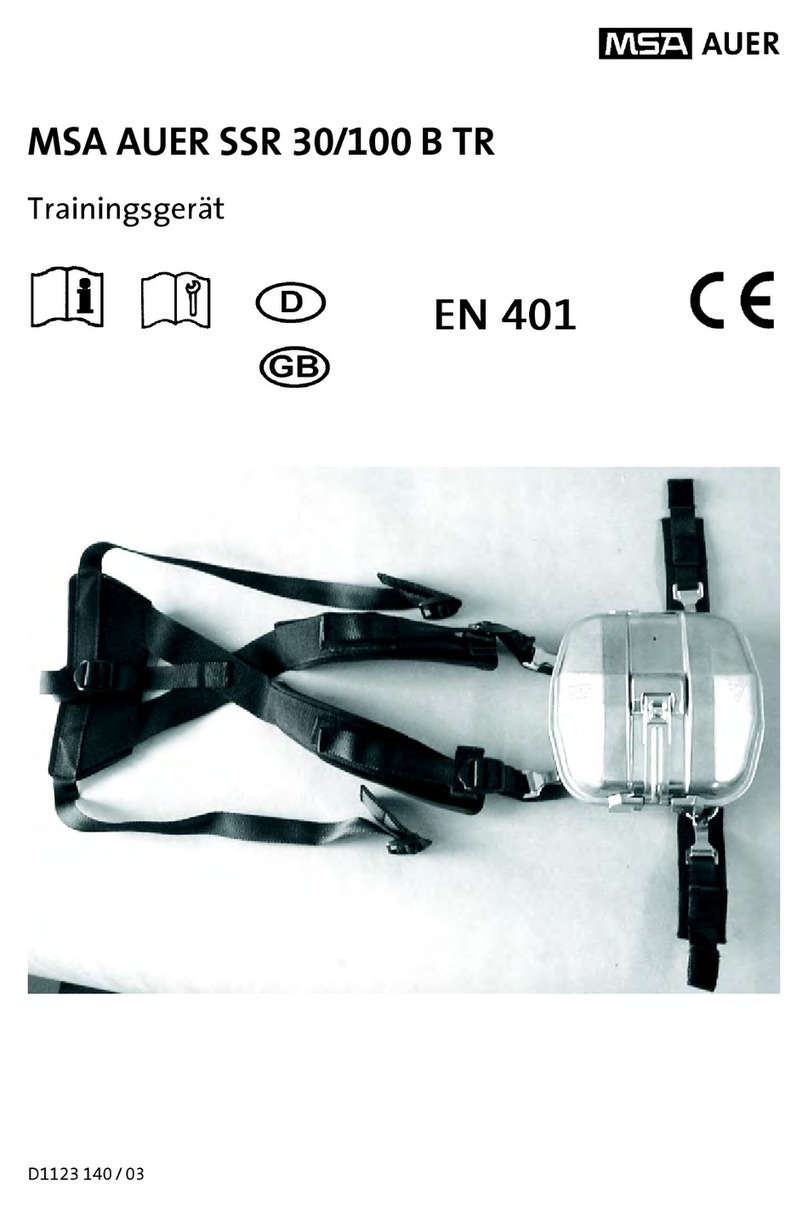
3
1 Sicherheitshinweis 1 For Your Safety
Diese Gebrauchs- und Instandsetzungsanleitung weist
auf die bestimmungsgemäße Verwendung des Produk-
tes und auf die richtige Instandsetzung des Produktes
nach Gebrauch hin und dient zur Verhütung von Gefah-
ren. Sie muss gelesen und beachtet werden. Dieses
Produkt kann seine Aufgaben, für die es bestimmt ist,
nur dann erfüllen, wenn es entsprechend den
MSA AUER-Angaben eingesetzt bzw. verwendet und
wieder instandgesetzt wird.
Die von MSA AUER für dieses Produkt übernommene
Garantie verfällt, wenn es nicht entsprechend den
MSA AUER-Angaben eingesetzt bzw. verwendet, ge-
pflegt und wieder instandgesetzt wird.
Auswahl und Einsatz des Produktes unterliegen nicht
dem Einfluss von MSA AUER, sondern obliegen dem
Verwender. Unsere Haftung bezieht sich daher nur au
gleichbleibende Qualität des Produktes.
Instandsetzungsarbeiten am Produkt, die nicht von
MSA AUER durchgeführt wurden, unterliegen nicht dem
Einfluss von MSA AUER. Unsere Haftung bezieht sich
daher nur auf von MSA AUER durchgeführte Instandset-
zungsarbeiten.
Gewährleistung und Haftung gemäß Verkaufs- und Lie-
ferbedingungen werden hiervon nicht berührt oder ver-
ändert.
Das in dieser Gebrauchs- und Instandsetzungsanlei-
tung beschriebene Gerät entspricht der Richtlinie
89/686/EWG. Es ist das Trainingsgerät für einen
Chemikalsauerstoff(KO2)selbstretter nach EN 401.
Like any piece of complex equipment, the MSA AUER
product will do the job it is designed to do, only if it is
used and serviced in accordance with the manufacturer’s
instructions. This manual must be carefully read by all
individuals who have or will have the responsibility fo
using or servicing the product. The warranties made by
MSA AUER with respect to the product are void if the
product is not used and serviced in accordance with the
instructions in this manual. Please protect yourself and
your employees by following them.
The above does not alter statements regarding the war-
ranties and conditions of sale and deliveries o
MSA AUER. The product must be checked and main-
tained regularly by experts; the results must be recorded.
We recommend a service contract with the MSA AUER
Customer Service.
The apparatus described in these Instructions fo
Use and Reconditioning is in accordance with Direc-
tive 89/686/EEC. It is a training apparatus for the
chemical oxygen (KO2) self-rescuer according to EN
401.






























